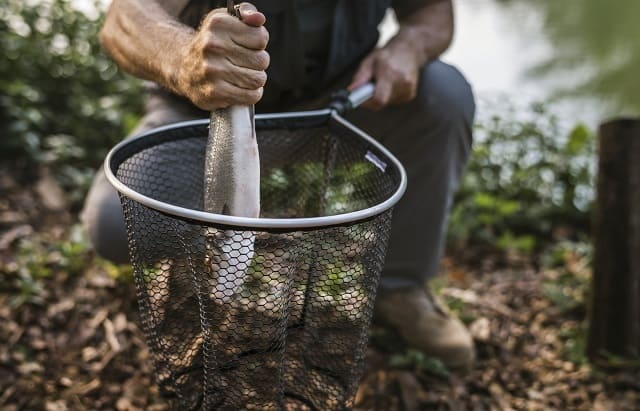Using a top notch fishing rod is not enough for a super successful fishing trip; you also need a premium quality fishing net that goes along with your fishing gear perfectly. In addition to getting the proper net fishing techniques mastered you should know about the names of the different fishing nets, and how you should go about purchasing one for you. Here are some
- Landing Nets
- Dip Nets
- Cast Nets
- Seine Nets
Here, we will be focusing on landing nets.
What kind of fishing net will you need?
The answer to this question depends a lot on what type of fishing you are doing and the location of your fishing trip. This is because different locations have specific rules and regulation regarding the use of nets and fishing in general. For example, several US states prohibits the use of nets for fishing purposes, while in other states nets can only be used once you have already hooked the fish, and not before.
Therefore, it is imperative that you check with the local fishing guides and learn about the rules and regulations of where you will be fishing. However, the most common type of net used in general fishing purposes is the landing net. To a normal person, a net is just a net, but to an experience fisher, a good quality net can make the difference between going home empty handed or with some great fish. Here are some of the main factors that come into play when choosing the perfect landing net:
- Size
- Knotted or Unknotted
- Mesh type
- Shape of the hoop and its size
- Length of the handle
- Your budget
What size of fishing net is the best?
The bag of the net should be able to fit the type of fish you want to catch. This is why the type of fish you are going after becomes important. If you intend to fish for bigger ones like the 15-inch rainbow trout, you should opt for a 17-inch by 19-inch hoop. Although, going for a larger 20-inch by 23-inch net bag is recommend if you think you will be getting bigger fish than that.
However, if you aim to catch smaller fishes, go for a net that has thick mesh and doesn’t have bigger holes.
The mesh type and style
The type and quality of the net mesh you pick depends mostly on the style of fishing you intend to adopt. If you wish to catch and release the fish, you should choose an unknotted mesh; this mesh type prevents damage to the scales of the fish.
However, if you want to snap and keep the fish, it’s better to choose a knotted mesh type. The mesh type is available in any commercial fishing net.
The type of mesh is another matter:
- A micro-mesh is small and soft, and great for catching trout and bait fish.
- A tangle-free micro-mesh on the other hand is great for getting some walleye.
- a knotless mesh can be used to snap different saltwater fishes, pikes as well as catfishes
- A rubber mesh is also tangle-free and is the best choice for bass.
Hoop size and shape
There are three basic hoop shapes that perform differently:
- The tear drop shop is commonly a one size fits all. It is great for a variety of species.
- A scoop net or hand net enables you to place the net under the fish for easy sweeping it up from the water.
- A D-shaped hoop is perfect for shallow water fishing.
Handle length
This is yet another feature that totally depends on the place of fishing. Handles range from 30 inches to 96 inches. So, if you intend to fish from a boat, you should purchase a longer handle and for other purpose, a shorter one will do. And, if storage and transportation is a concern to you, there are collapsible handle options for you.
Overall quality
If you want to use the net for a long time, you must get a net made from high quality fishing net material. So what are fishing nets usually made of? Normally, fishing nets are made using artificial poly amides like nylon and rubber because of their longevity and durability; but in some rare cases, these nets were also knotted using cotton, wool or silk. It’s recommended that you pick a fishing net that would serve you for quite some time.
But what if you damage your net in some way? You can repair the damage by using a netting needle and learning how to either do a thumb knot, a sheet bend or a hitch depending on how and where you damage your net.
Final Touch
There are many types of fishing nets out there with distinct features that each fulfills a specific need. Understanding your requirements, and in some cases the rules and regulations are necessary in determining the perfect net for you.

Tony is a professional fishing instructor and his hobby is fishing! He has been fishing for the last 4 years and he loves fishing instructor profession. Based on his experiences with the different type of fishing; he is sharing his opinion about various fishing technique so that a beginner can get started right away. Find him on Twitter. Happy reading!

